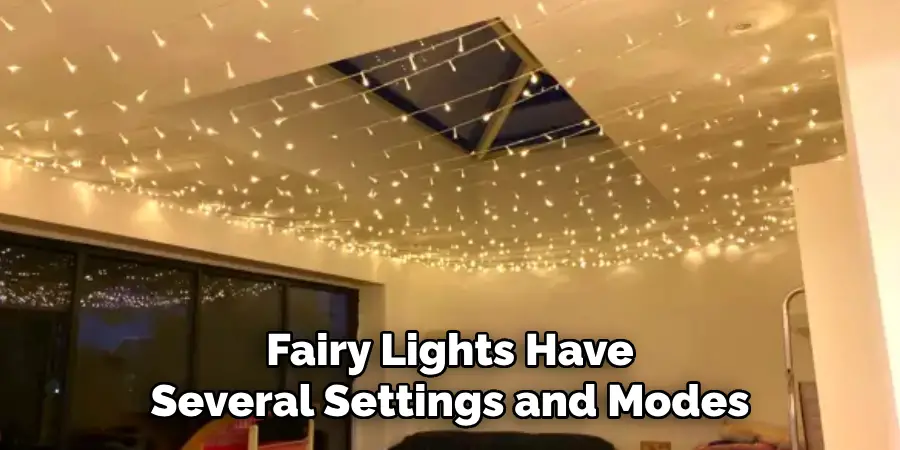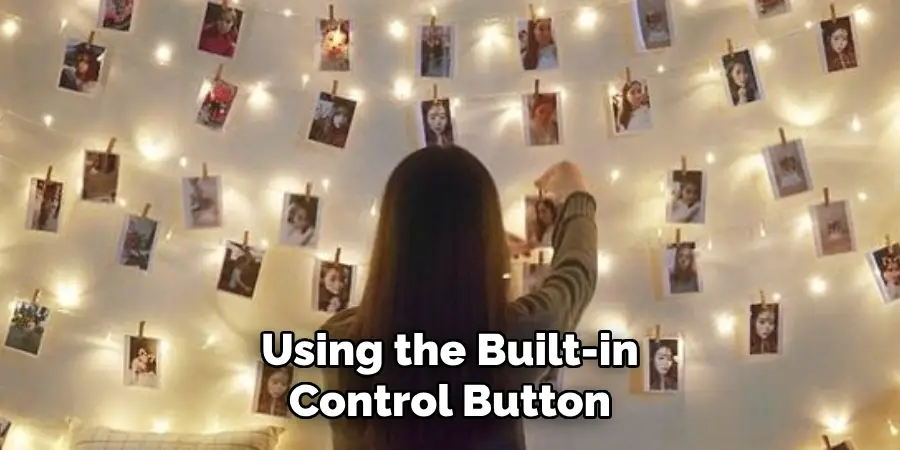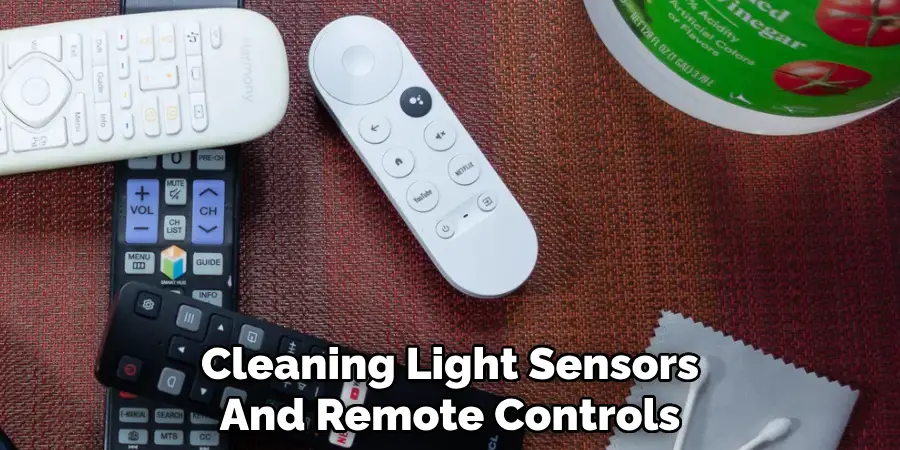Fairy lights have become a beloved accessory for enhancing cozy and magical atmospheres in homes, parties, and outdoor events. Their gentle glow and versatile layouts allow them to transform ordinary spaces into enchanting realms, capturing the essence of whimsical decor. However, despite their widespread popularity, fairy lights often frustrate users with their tendency to default to different settings rather than staying in a chosen mode.

Cycling through modes like blinking or fading can detract from the desired ambiance, leaving many seeking solutions. This article aims to resolve this common issue by offering step-by-step guidance on how to make fairy lights stay on one setting consistently, ensuring they deliver the perfect lighting experience every time.
Understanding How Fairy Lights Work
1. Types of Fairy Lights
Fairy lights come in a variety of types, each with its unique power source and control mechanism. The most common types include battery-operated plug-ins and solar-powered lights. Battery-operated fairy lights offer enhanced portability and ease of installation, making them ideal for areas where power outlets are sparse. Plug-in fairy lights, however, ensure a consistent power supply, which is perfect for prolonged use in places with accessible electric outlets.
Solar-powered lights are environmentally friendly, harnessing sunlight during the day to illuminate spaces at night, hence eliminating the need for an external power source. Depending on the model, they can be controlled using various mechanisms like remote controls that allow for convenient adjustments from a distance, built-in buttons usually located on the light’s control box for quick manual changes, and app-based controls providing smart integration with smartphones for advanced customization.

2. Common Settings and Modes
Fairy lights have several settings and modes, catering to different moods and events. Common modes include the steady-on setting, which provides a constant glow for a calming ambiance while blinking and fading modes offer dynamic lighting effects suitable for festive occasions. The slow glow mode creates a gentle waxing and waning effect, creating a soothing atmosphere, and sequential patterns add vibrancy with varied light sequences.
However, these lights often tend to revert to a default preset mode, especially if not properly set. Understanding these modes and the reasons behind mode cycling is essential for maintaining your preferred lighting choice, especially during power interruptions or when using devices with limited memory functions.
How to Make Fairy Lights Stay on One Setting: Setting the Lights to Your Preferred Mode
1. Using the Built-in Control Button
To set your fairy lights to the desired mode using the built-in control button, start by locating the control box, which typically has a single button to manage all modes. Press the button repeatedly. Each press will cycle through the available settings, such as steady-on, blinking, fading, and other patterned modes. Continue pressing until you reach your preferred setting.

Once you are satisfied with the mode, simply stop pressing the button to keep the fairy lights in that mode. It might take a few tries to fully understand which press corresponds to each mode, so patience is key during this process.
2. Locking the Setting with a Remote
If your fairy lights have remote control capabilities, setting and locking your preferred mode becomes even simpler. Begin by pointing the remote towards the fairy lights or their control box, ensuring a clear line of sight. Use the remote’s designated buttons to navigate the various lighting modes, similar to the built-in button. The significant advantage here is the ability to quickly find and select your desired setting without cycling manually through each mode.
Once the appropriate mode is selected, the remote often has a “lock” or “set” function to freeze the lights in the current mode. Remember to store the remote in a memorable and accessible place. This is important for quickly resetting the lights should they accidentally change modes or turn them off.

3. Using a Timer or Memory Function
Some fairy light models feature a memory function, which retains the last selected mode even after being turned off. If your lights support this feature, simply set them to your preferred mode using either the built-in button or a remote, then power them off and back on to test if the memory function works. Lights with a reliable memory function will return to the previously selected mode automatically.
Additionally, integrating a timer can further enhance this setup by controlling when your lights turn on and off, ensuring they consistently start in the desired mode without manual reconfiguration. Set the timer to match your lighting schedule, adjusting for different events or times of day to maintain the ambiance you wish to establish, ensuring your fairy lights deliver consistent, magical lighting at all times.
Troubleshooting Common Issues
1. Lights Resetting After Power Loss
One of the frequent concerns with fairy lights is their tendency to reset to a default mode after experiencing a power interruption, such as a battery change, unplugging, or power outage. This reset occurs because some Fairy Light models do not have a built-in memory function or low battery retention, so they cannot store the previously set mode.
To prevent frequent loss of settings, avoid unnecessary unplugging or abruptly turning off the power supply. Instead, opt for continuous power sources, especially if your lights are plug-in models. Consider using a battery backup or uninterruptible power supply (UPS) for lights installed in areas prone to power cuts, ensuring that your lights retain their settings even during temporary power disruptions.

2. Remote Not Working Properly
A common grievance is when the remote control does not effectively lock the settings on fairy lights. Possible causes could be dead batteries, signal interference, or obstacles blocking the remote and control box communication. Begin troubleshooting by replacing the remote’s batteries and ensure they are inserted correctly, as weak or improperly installed batteries can impede remote functioning.
Additionally, ensure a clear line of sight between the remote and the fairy lights or control box, as any blockage can hinder signal transmission. If the remote still fails to work, check for nearby electronic devices or physical barriers that might be causing interference and attempt to operate the remote from different angles or distances.
3. Issues with Lights Cycling Through Modes
Another prevalent issue is fairy lights that continuously cycle through modes, often due to faulty controls or a malfunctioning button. In such cases, first, inspect the button on the control box or remote for any visible damage or debris affecting its operation. Sometimes, the solution might be as simple as cleaning or gently pressing the button multiple times to ensure it is not stuck. If the problem persists, try resetting the lights by completely removing power.
For battery-operated models, take out the batteries and wait several minutes before reinserting them. For plug-in lights, disconnect the power source and leave it unplugged for a few minutes before reconnecting. This hard reset can often recalibrate the controls and clear any existing glitches, allowing for normal functioning and a stable mode setting. If the issue continues despite these steps, you may consider reaching out to the manufacturer’s support for further assistance or exploring warranty options for a faulty product.
Using Additional Accessories for Stability
1. Adding an External Remote Control
For those who find the built-in controls of their fairy lights unreliable, investing in an external universal remote control can offer a more stable and versatile solution. These remotes typically come with a wider range and better connectivity options. When selecting an external remote, ensure it is compatible with your specific fairy light model. This often means checking the frequency and connectivity requirements, typically listed in the product specifications. Once you have the right remote, syncing it with your lights usually involves a simple pairing process, such as setting both devices to the same frequency or using a syncing button on the control box.
2. Utilizing Smart Plugs or Smart Home Devices
Integrating your fairy lights with smart home systems can significantly enhance their usability and reliability. Smart plugs are convenient, allowing you to power your lights on and off remotely through an app or voice command with devices like Amazon Alexa or Google Home. To use this feature, plug your fairy lights into a smart plug and connect the smart plug to your home’s Wi-Fi network. Next, create custom routines or voice commands to manage your lights, such as turning them on at sunset or off at bedtime. This setup can ensure your lights maintain the preferred settings without manual intervention.
3. Upgrading to Fairy Lights with Advanced Features
If you want maximum control and functionality, consider upgrading to fairy lights with advanced features, such as smart app control, Wi-Fi connectivity, or enhanced memory settings. These modern lights often allow for detailed lighting modes, colors, and schedule customization through a dedicated smartphone app. When choosing these lights, opt for models that support seamless integration with your smart home ecosystem to ensure they remain in your preferred mode consistently. Additionally, lights with advanced memory or “remember last settings” functionality can provide peace of mind, keeping your selected mode intact even after a power outage or interruption.
Maintenance Tips for Consistent Performance
1. Regular Battery Checks for Battery-Operated Lights
Ensuring your battery-operated fairy lights perform consistently starts with routine battery checks. Regularly inspecting batteries for signs of wear or low charge can prevent power fluctuations that might result in the lights resetting to default settings. Consider setting a schedule for battery checks, replacing them every few months or as needed. High-quality, reliable batteries are crucial for maintaining stable power flow and optimal performance. Opt for well-known brands that provide long-lasting power, which can help reduce the frequency of battery changes and maintain consistent lighting.
2. Inspecting Wires and Connections
Maintaining the integrity of wires and connections is essential for uninterrupted performance. Regularly inspect wires, plugs, and connectors for any signs of wear and tear, such as frayed wires or loose connections, which can cause interruptions or flickering. Secure connections by ensuring plugs are fully inserted and wires are properly affixed to avoid accidental unplugging or loosening. Using cable ties or cord organizers can help manage and protect wiring, preventing potential damage from tangling or heavy handling.
3. Cleaning Light Sensors or Remotes
For optimal operation, cleaning light sensors and remote controls is fundamental. Dust and dirt can accumulate on these components, interfering with their communication ability. Use a soft cloth, preferably microfiber, to gently wipe down sensors and remote surfaces, removing any debris without scratching them. Regular cleaning helps maintain clear signal reception, ensuring your fairy lights respond to commands and settings promptly.

Conclusion
To achieve a stable lighting experience with your fairy lights, employ strategies ranging from utilizing built-in controls to incorporating advanced smart solutions. Understanding how to make fairy lights stay on one setting involves ensuring consistent power through regular battery checks and maintaining wires and connections. Regular cleaning of sensors and remotes minimizes operational interference. Exploring various methods, from external remotes to smart plugs, can customize your experience, making your fairy lights magical and dependable. Embrace these tips to find the best solution that meets your needs for enchanting, reliable lighting throughout your space.

